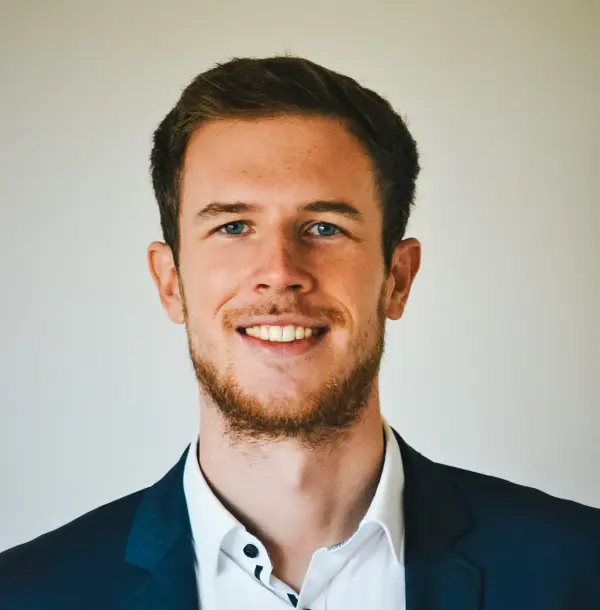Automating Sheet Metal Design Optimization for Optimate GmbH
Collaborating with Optimate's engineers, we created an innovative geometric optimization algorithm to shape industrial manufacturing.

"Together with Motius, the team of Optimate successfully proved that the design optimization concept works and that it has the potential to revolutionize the sheet metal industry.”
Picture Source: TRUMPF Group

Our Final Result
Overview
Challenge
Solution
Technologies
Impact
Our Final Result
With the Automated Optimization algorithm, Optimate is taking a big leap towards their vision of revolutionizing the design procedure of sheet metal components.
Geometric Constraint-Based Algorithm for Sheet Metal Parts Design Optimization
- A fully Automated Optimization algorithm decomposes the design of a sheet metal component, understands mounting hole and stability requirements, and generates new optimized designs.
- The generated superior designs reduce material waste and manufacturing costs without compromising the functionality of components.
- The optimization pipeline was developed from PoC to MVP to production-grade system using software engineering best practices like Test-Driven Development
In the scope of Trumpf’s intrapreneurship program, the solution secured further investments, enabling Optimate to become a spin-off company. Our successful collaboration project was the basis for a long-term collaboration between Optimate and Motius to further optimize the algorithm and establish Optimate in the market.

Looking for an
Innovation Partner?
Contact UsChallenge
Optimate aimed to prove that sheet metal designs can be optimized automatically with innovative algorithms while still aligning with design constraints set by a designer.
Improving the ROI of Sheet Metal Design Optimization
The Optimate team noticed that sheet metal parts from the industry are often designed in a non-optimal way. This is a cost factor on two levels. First, every piece of metal wasted is money lost. Second, optimization efforts exist, but they are not time-efficient enough to justify the complex process.
Optimizing Sheet Metal Parts Automatically
A lot of sheet metal components contain similar patterns of design flaws. Optimate had the vision that these design flaws could be detected and optimized automatically by a sophisticated optimization algorithm. However, there were a lot of open questions. How can a geometric design be described as an optimization problem? Can the problem be solved in a limited time? Is Machine Learning required to provide a solution to the problem?
Engineering a Custom-Tailored Solution
We couldn't build upon existing implementations, because the very specific problem of end-to-end design optimization for sheet metal components has not been tackled by research yet. Also, we needed to collect a data set of test components, to better understand the patterns of design flaws and to validate our algorithm against real-world data.
Engineering a Custom-Tailored Solution
We couldn't build upon existing implementations, because the very specific problem of end-to-end design optimization for sheet metal components has not been tackled by research yet. Also, we needed to collect a data set of test components, to better understand the patterns of design flaws and to validate our algorithm against real-world data.
Solution
A fully automated design optimization pipeline that decomposes the sheet metal design, deduces stability and mounting hole requirements, and generates superior designs with the same functionality.
All About Optimate GmbH
Digitalizing Sheet Metal Knowledge and Sharing It With the World.
"We’re restless in our own special way. We don’t take things as they are. We rethink them. And in doing so, we push boundaries. In line with what is technically possible and in a spatial sense as well. Our goal is to make valuable sheet metal design knowledge and know-how globally accessible."

Tackling the Challenge in a Four-Step Process
Potential Recognition (2020)
To assess the business case, we used supervised and semi-supervised Machine Learning algorithms to predict the optimization potential of a sheet metal component based on its features. Each component was classified into either "not optimizable", "optimizable", or "highly optimizable" with an accuracy of 91%.
Automated Optimization PoC (2021)
After validating the business case, we assessed which technical approach is best suited to implement the required design optimizations. We engineered a custom graph-based optimization algorithm that brute-forces all relevant design optimizations. A prototypical implementation in Python proved the feasibility of the approach.
Automated Optimization MVP (2022)
For testing and optimizing our algorithm, we ran a first test set of around 100 different sheet metal parts. We added more advanced technical design features like the reduction of flanges to accommodate new bend zones. Once our pipeline was able to handle all parts in the test set, it yielded an average cost reduction of 22%. The algorithm was made accessible to the first customers of Optimate as a beta feature.
Production-Grade System (2023)
In the course of 2022, Optimate scaled up their own developer team to five software engineers. Motius and Optimate worked seamlessly together to turn Automated Optimization into a production-grade system. Industry-leading best practices like Test-Driven Development, Pair Programming and a Trunk-Based Workflow ensure clean software engineering. The new pipeline surpassed the performance of the MVP in July 2023 and was released to Optimate's beta customers.





